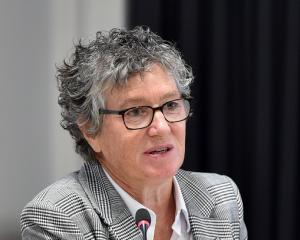
American radio actor Joseph Julian, who wrote This Was Radio tugged at the heartstrings with this anecdote: "Trying to analyse the reasons for the broad, universal appeal of radio drama I find it expressed best by a little 7-year-old boy who was asked which he liked better, plays on the radio or plays on television. ‘On the radio,’ he said. ‘Why?’ he was asked. He thought, then replied, ‘Because I can see the pictures better’."
Voices and sound effects could indeed create pictures in your mind, an idea brilliantly proven by comedian Stan Freberg who, in a promotion for radio advertising, mixed effects to produce the sound of draining Lake Michigan and filling it with hot chocolate before rolling a 700-foot mountain of whipped cream into it and the Royal Canadian Air Force towing a 10-ton maraschino cherry overhead to drop into the whipped cream while 25,000 cheering extras screamed their heads off.
He ends with a challenge: "Try doing that on television!"
I was reminded of this "theatre of the mind" business by a recent article in the Manawatū Journal of History. In a fine example of exploring the recesses of social history Margaret Tennant, former history professor at Massey University, told the story of Morrie Mouse.
Morrie was the mascot of Palmerston North radio station 2ZA’s children’s session and the article described "Palmerston North’s wedding of the century" in 1980. There were photos of the thousands crammed into The Square to see Morrie and Molly joined in matrimony.

Morrie, of course, was a man in a mouse suit, but the kids loved him all the same. The article was uncertain about Morrie’s beginnings and, in probably my most important contribution to New Zealand historical research, I was able to fill in the gaps for Prof Tennant.
During the late 1960s I was sent to Palmerston North to present the breakfast session on 2ZA and, like most breakfast sessions, the school bell segment featured an animal of some sort.
A spider in Auckland, a bumblebee in Wellington and in other parts of the country hens, sheep and other fauna made their mark. In Palmerston North I decided that Morrie Mouse would do the trick and each morning he squeaked his way into the imagination of Manawatu’s younger generation.
In those days disc jockeys were banned from expressing an opinion about anything important but it was possible to criticise local bigwigs by having Morrie squeak his disapproval of their treatment of the ratepayers.
Before long, the station management decided there should be a real Morrie and a pet shop supplied a mouse in a box near the station’s reception area.
I disagreed strongly, as once you had a real mouse what was left for the imagination? Luckily, I was shifted away about that time and not until I saw the recent article did I realise that Morrie had been Disneyfied and paraded around in a mouse costume.
That disappointed me as I always felt that the strongest characters are those you never see. Like Mrs Mainwaring of Dad’s Army. Talked about but never seen (until a complete flop of a film version was released a few years ago).

But the greatest of all characters of the imagination was Colin Lehmann’s Charlie Mouse.
When I arrived at 4ZB in the early 1970s I found that Charlie was the hero of every kid in Dunedin. Each morning he would squeak words of wisdom before popping back into his mouse house.
If children came to the station to see Charlie they were told he was a very shy mouse and would only appear in the morning for Colin. When 10-to-eight came each morning and the school bell was rung those of us hovering near the studio (newsreader and technicians) would discreetly disappear for five minutes while Colin and the mouse had their conversation.
Charlie, too, was able to make comments on current affairs.
When Colin returned to Dunedin in the 1990s Charlie came too, so for a span of almost 50 years Dunedin’s youngsters knew Charlie Mouse.
In Palmerston North Morrie is probably just another empty costume in the props department but Charlie wasn’t a 6-foot theatrical mouse, he was the mouse of the mind where for several generations of Dunedinites he remains.
They can probably still hear him squeaking.
— Jim Sullivan is a Patearoa writer.












